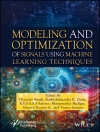In order to study living organisms, scientists not only study them at an overall macroscopic scale but also on a more detailed microscopic scale. This observation, pushed to its limits, consists of investigating the very center of each cell, where we find the molecules that determine the way it functions: DNA (deoxyribonucleic acid) and RNA (ribonucleic acid).
In an organism, DNA carries the genetic information, which is called the genome. It is represented as four-letter sequences using the letters A, C, G and T; based on these sequences, computer methods described in this book can answer fundamental questions in bioinformatics.
This book explores how to quickly find sequences of a few hundred nucleotides within a genome that may be made up of several billion, how to compare those sequences and how to reconstruct the complete sequence of a genome. It also discusses the problems of identifying bacteria in a given environment and predicting the structure of RNA based on its sequence.
Sobre el autor
Annie Chateau is a lecturer at the University of Montpellier, France. Her research interests include algorithms and combinatorial structures.
Mikaël Salson is a lecturer at the University of Lille, France. His work focuses mainly on indexing and sequence comparison.












